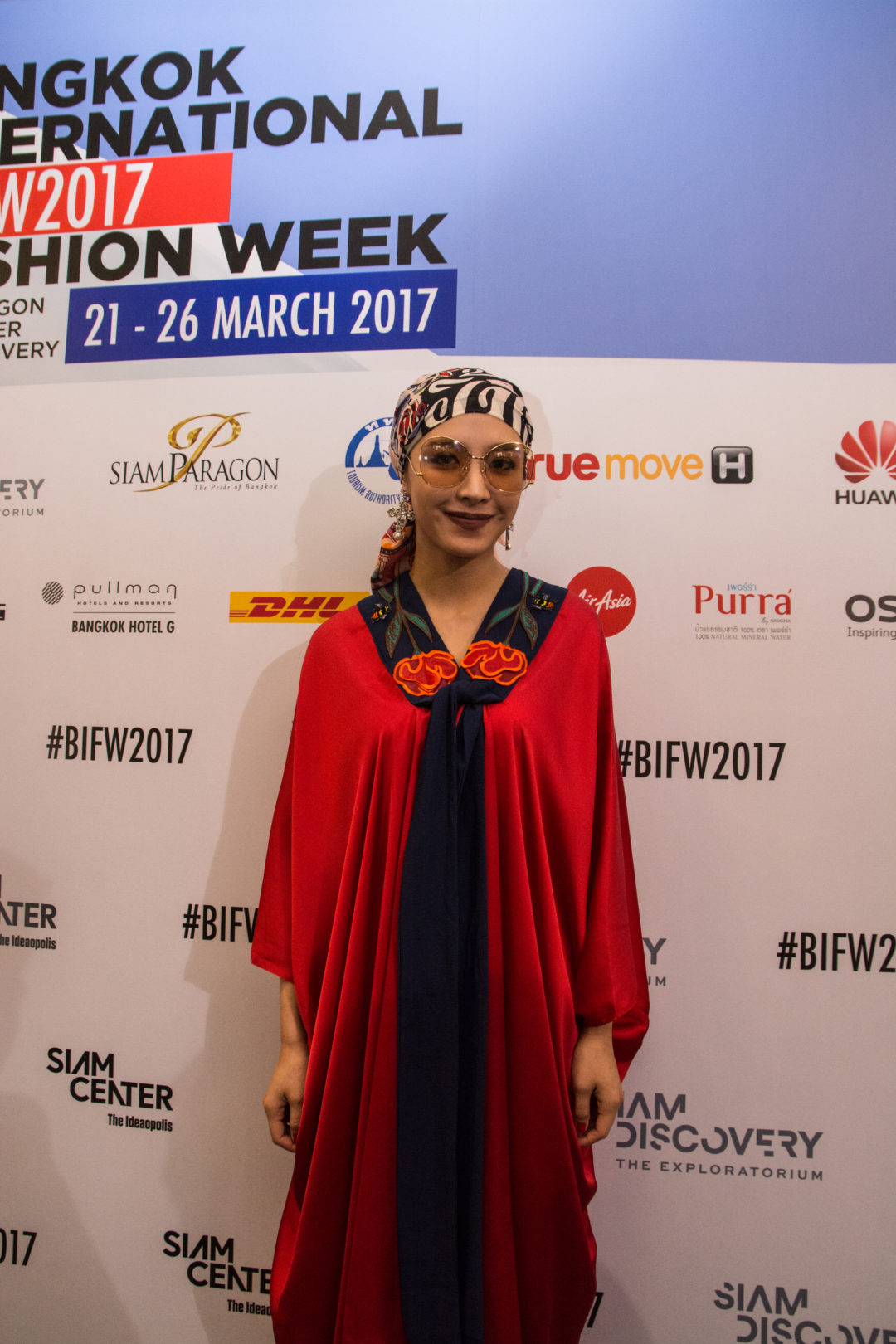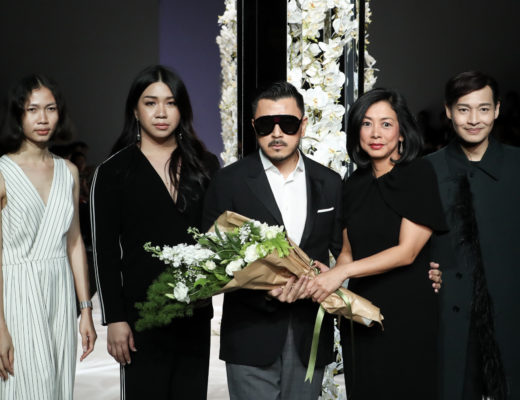The clicking of cameras. Cocktails in every hand. Live DJs and music, and, of course, a glittery, polished, and designer brand-sporting crowd. The Bangkok International Fashion Week (BIFW2017), a week-long event (March 21-26, 2017) held at Siam Paragon, Siam Center, and Siam Discovery, was a visual feast celebrating the creativity of new and established Thai and international designers. Attendees—ranging from fashionistas, aspiring designers, fashion editors, sponsors, and more—gathered in a waiting area surrounded by stores such as Chanel and Louis Vuitton, and enjoyed fashion interviews with fashion heavyweights such as Guo Pei and Asava, snapped photos of themselves with industry celebrities at the press wall, and viewed the rotating fashion collections on display in search of inspiration.
Predictably, some of the runway shows, held at Parc Paragon, were fashionably late. It was not uncommon to wait for half an hour in long lineups decked out with statement handbags, colourful jumpsuits, or floral print blazers—choices that mirrored the pieces unveiled on the runway. This year, it was all about looking distinguished yet sophisticated: Thai designers mixed classic pieces like pantsuits and evening gowns with bold textiles and tropical prints, drew on design elements from Asian and European culture, and created narratives influenced by the designers’ own travels and the ever-evolving Thai fashion landscape.
Seats were packed, the crowds charged with anticipation for each new show, each new model to trot down the runway, each new dimming of the lights or change of rhythm in the largely hip hop, electronic, and traditional-based runway soundtracks. The pieces modeled by Thai celebrities got the most reception, which speaks to the strong influence of celebrity culture in Thailand’s fashion scene, where a photo or two of someone famous wearing a piece from designer’s new collection could spark fashion trends overnight.
“They still dress more formally compared to Europe or North America,” said an international attendee from Russia. Perhaps this is due to the strong influence of Western design aesthetics, which translated into a lot of formal wear bases, which Thai designers have made unique through the use of Thai silk, symbols from Asian folklore, and traditional embroideries and design elements. But this is just one opinion: other international attendees, such as a woman in a white, gold-buckled Asava dress, came specifically to support her favourite designer, whose “feminine design” and “quality materials” were closet staples that could be worn year-round, dressed up or down with accessories to stand out in a refined way—a welcome break from the fast fashion trends abroad.
The fashion industry in Thailand is thriving, and rising Thai designers were given the extra push at the event. In Siam Center, young Thai designers displayed their work, which was described by attendees as “fresh” and “unique”, with some even preferring the designs of these up-and-comers to those of existing brands.
Bangkok International Fashion Week is only in its 10th year, but growth has been impressive, with more diverse attendees, more innovations (BIFW2017 could be viewed worldwide through 360° live broadcasts), and more progressive, dynamic designs that tell the stories of a traditional, modern, and future Thailand.
Words by Millie Ho (www.millieho.net)
Photos by Vincent Sung & Courtesy PR Siam Piwat
Produced by Le Flux Asia (www.lefluxasia.com)


















